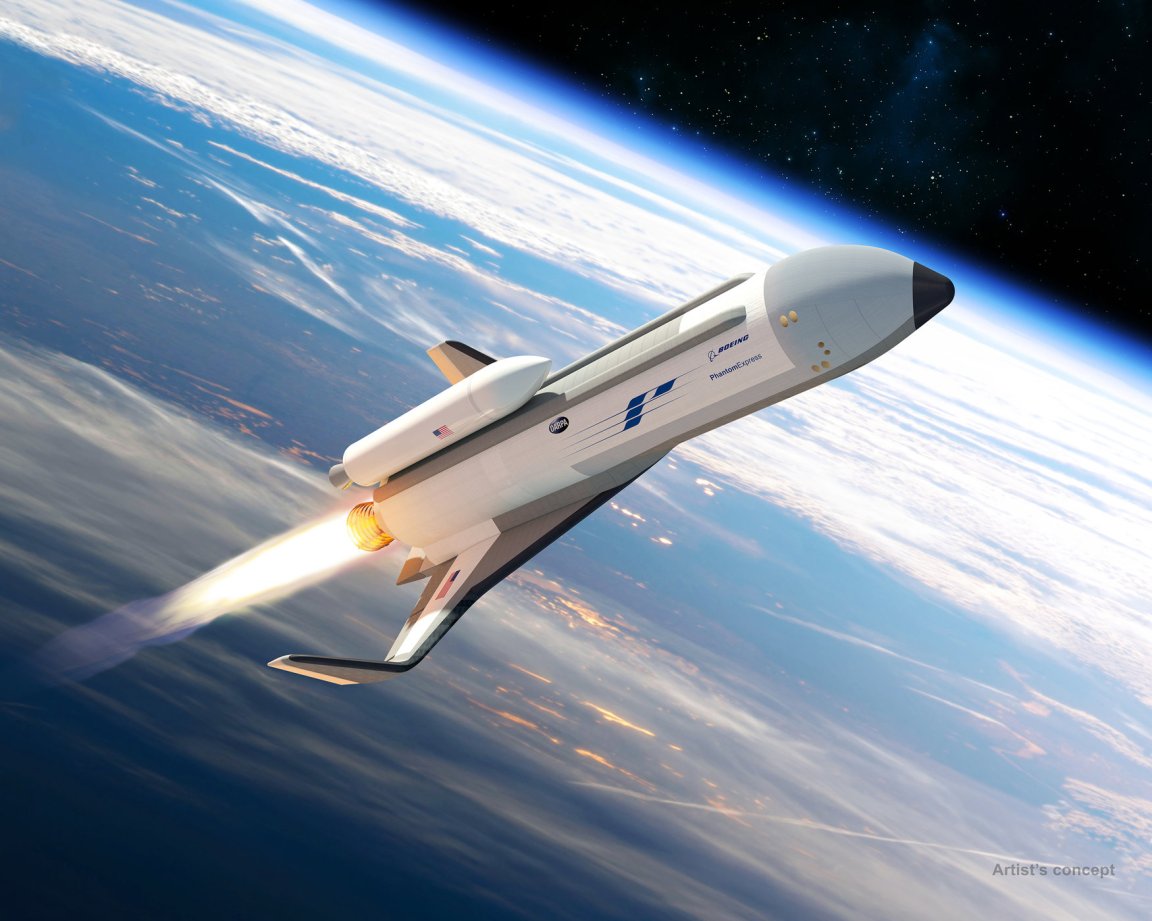
Experimental Spaceplane (XS-1) Program
The U.S. Defense Advanced Research Projects Agency (DARPA) has chosen The Boeing Company to design and build its Experimental Spaceplane (XS-1), an unmanned, reusable space plane expected to improve national security by making low-cost, launch-on-demand access to space a reality.
If successful, the XS-1 project will give birth to a completely new kind of space plane, but many of its features would be reminiscent of an ordinary earthbound plane. About the size of a commercial jet airplane and powered exclusively by self-contained cryogenic propellants, the craft would take off vertically without external boosters and achieve hypersonic speeds. Upon reaching sufficient altitude, it would release its upper stage and deploy a 3,000-pound satellite.
The job complete, the first stage would return to Earth and come in for a landing horizontally, much like an airplane. Again, just like a typical commercial jet, it would only require a few hours of downtime before being ready to fly again.
The XS-1 design also includes futuristic technologies that would set it apart from existing aircraft and spacecraft. These include composite cryogenic propellant tanks and hybrid composite-metallic surfaces and wings capable of withstanding temperatures of more than 1,093 degrees Celsius (2,000 degrees Fahrenheit) and hypersonic, suborbital flight stresses. It is also expected to feature autonomous flight and flight-termination capabilities, courtesy of the agency’s Airborne Launch Assist Space Access (ALASA) program.
A New Era in Space Flight
Today, most (but not all) spacecraft aren’t reusable, and the ability to launch into low Earth orbit within a matter of days, rather than months or years, is even more out of reach. If Boeing succeeds with the XS-1 project, humanity’s abilities to guard, repair, and replace satellites — which both civilians and the military rely upon heavily — will be exponentially enhanced.
DARPA is hopeful that Boeing is up to the task.
“The XS-1 would be neither a traditional airplane nor a conventional launch vehicle but rather a combination of the two, with the goal of lowering launch costs by a factor of ten and replacing today’s frustratingly long wait time with launch on demand,” DARPA program manager Jess Sponable said in a press release. “We’re very pleased with Boeing’s progress on the XS-1 through Phase 1 of the program and look forward to continuing our close collaboration in this newly funded progression to Phases 2 and 3 — fabrication and flight.”
If the design and testing phases all go as planned, we should see the XS-1 in the air in 2020.